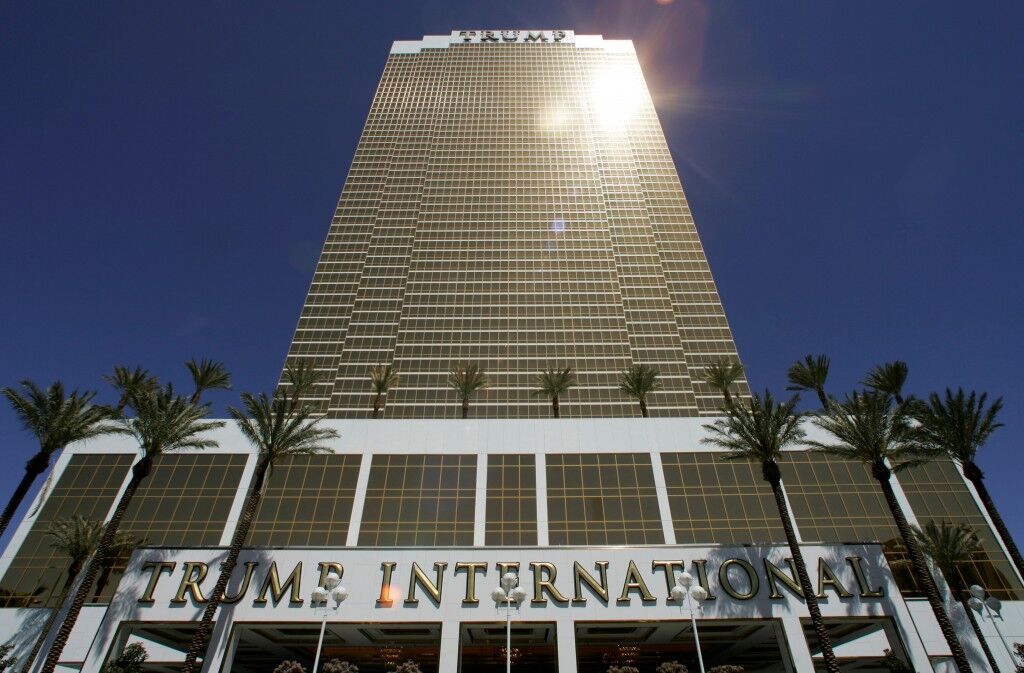The exploitation of fear in the U.S.
I currently work in the financial industry where once a week, all the managers in my office gather to discuss how major economic events are projected to affect the markets. Our Global Asset Management team provides us with circulars that include a summary of the events, historical facts, definitions and solutions to client concerns. This past week in particular we were introduced to the concept of “Trumponomics.”
Unable to differentiate whether this would be a document mocking Trump’s inconsistent policies or praising them, I was eager to start reading. As the handouts were being passed around, the facilitator prefaced the discussion with “Trump can be a crazy guy and I’m not supporting his politics, but he’s actually been doing good things for the economy.”With this introduction, I prepared myself to be repulsed by the proceeding conversation.
I was angry at the notion that a man so ignorant as to symbolically ban an entire religious group from entering a state was being praised for his “pro-growth” policies. Baffled by the glorification of his “America-first” socio-economic promises I was eager to explore what this all meant. We were first introduced to the multi-faceted ways he planned on rebuilding the U.S. economy, primarily through a protectionist trade policy, corporate tax reform, de-regulation and the transfer of funding from defensive sectors to cyclical sectors (this includes energy, industrials and materials). The onset of his inauguration in conjunction with the release of his executive order got me thinking: Trump’s very short political career has been congested with contradictions.
It is no surprise that Trump’s protectionist policy has expanded to include everything from trade to immigration. The economic policies revealed during his campaign were predicated on the idea that the U.S. was unfavourably positioned in terms of foreign trade. His party’s priority has been to refocus the transfer of foreign resources to Americans while preserving American jobs. During a Republican primary debate in February 2016, Trump stated “I’m going to bring jobs back from China, Mexico, Vietnam. They are taking our jobs.” Referring to foreigners or non-Americans as “they,” Trump masquerades as the saviour of a struggling lower class, fighting vigilantly against the “other.” With this tactic, he mobilizes a huge portion of the American people on the exploitation of fear through focusing on divide and dissent.
As many critics have pointed out, it is ironic that much of the success of the billionaire’s corporations has been sustained by foreign labour. Trump’s Mar-a-Lago property has filed documents in as recently as 2016 to bring in foreign workers—jobs that by Trump’s rhetoric should be occupied by Americans. Democratic nominee Hillary Clinton further pointed out during her campaign that “Trump products have been made in twelve other countries,” including China, Turkey, Vietnam and Mexico. His America-first rhetoric does not fall in line with his past business model. But, simply bypassing these contradictions, he has effectively mobilized people by exaggerating the fear of unemployment and the likely potential of terrorist attacks on American soil.
Keeping in line with his protectionist policies after inauguration, Trump quickly signed an executive order titled “Protecting the Nation from Foreign Terrorist Entry into the United States,” posing as a temporary solution to terrorism. The first section lays out the purpose of the order; it is as simple as keeping terrorists out in order to prevent attacks similar to 9/11. It allows officials to “scrutinize” the validity of those individuals attempting to enter the United States. The language used in the order immediately strikes as exclusionary, outing the “foreign born individuals” that are attempting to sneak in under the pretense of being students or through the Refugee Resettlement Program.
Tightening the state borders and clearly identifying the difference between Americans and foreigners, specifically from the Islamic world, creates two distinct sides. The order sanctions the protection of American people by ensuring that those let in to the country do not hold hostile attitudes to American vales and ideology: “The United States cannot, and should not, admit those who do not support the Constitution, or those who would place violent ideologies over American law.” Somehow Iran, Iraq, Syria, Sudan, Libya, Yemen and Somalia were specifically identified as states whose citizens would not serve American national interests.
In short, when Trump alludes to protecting national interests, he means his own. When he erects policies helping Americans to obtain previously foreign-held jobs, it never comes without benefit to his brand. And when he attacks refugees, students, and skilled workers, labeling them all as potential terrorists, it’s only to establish a tangible other. His course of action is carefully calculated and even without any political experience, he has surrounded himself with a team of individuals who will propel him to run the state as a business and not a unified country.
For example, Rex Tillerson was confirmed as Trump’s Secretary of State –he previously served as Exxon’s CEO and will now be responsible for matters regarding foreign affairs. Even more troubling, Trump’s sons are said to be taking over his business, and the President continues to blur the lines between his national and corporate obligations. He will continue to manipulate the American people into believing his arrangements are constitutional because he has been able to exploit their deeply held fears.
The average Trump supporter probably doesn’t place much importance on this issue because his corporate dealings don’t affect them, their livelihood isn’t threatened by a Wall Street scandal, and these people are simply afraid of losing their jobs –a legitimate concern in itself. But because Trump has done a tremendous job exploiting these fears and misdirecting Americans to blame foreign scapegoats for every domestic concern, it’s impossible to neatly separate his economic policies from his divisive rhetoric.
Image curtesy of Reuters.
